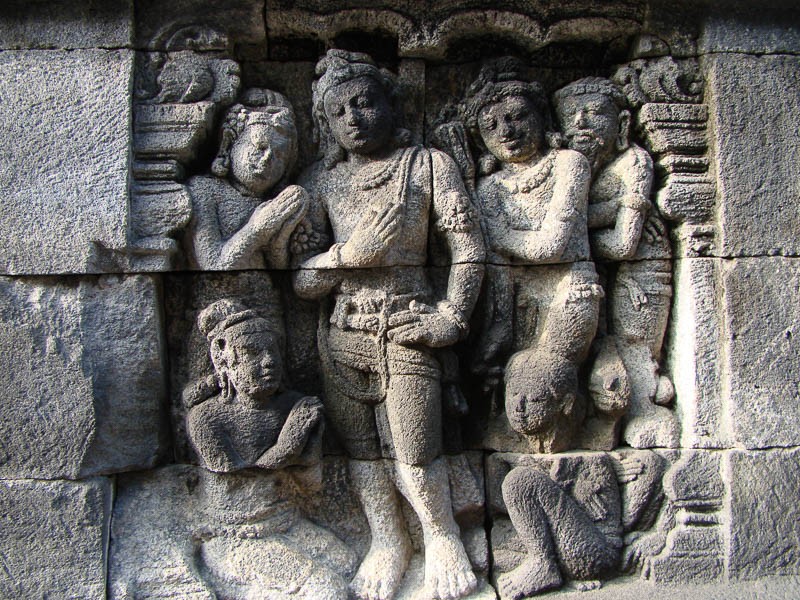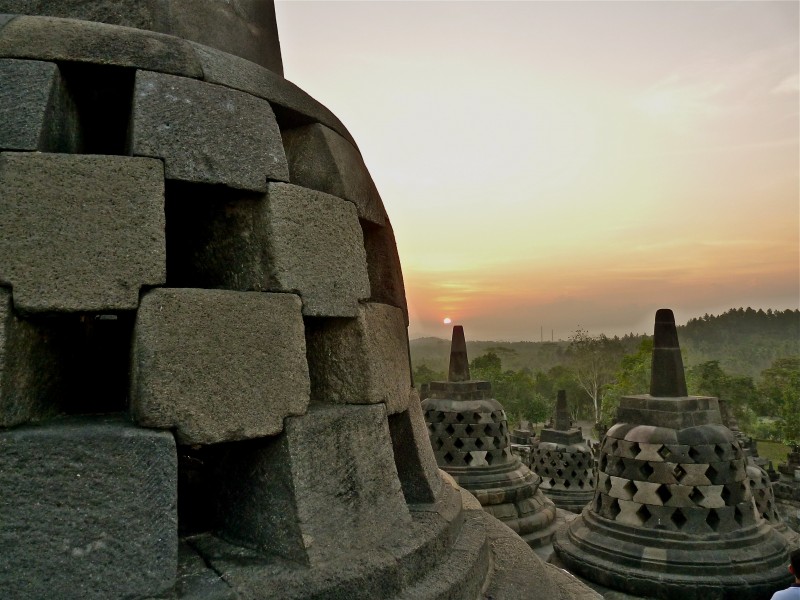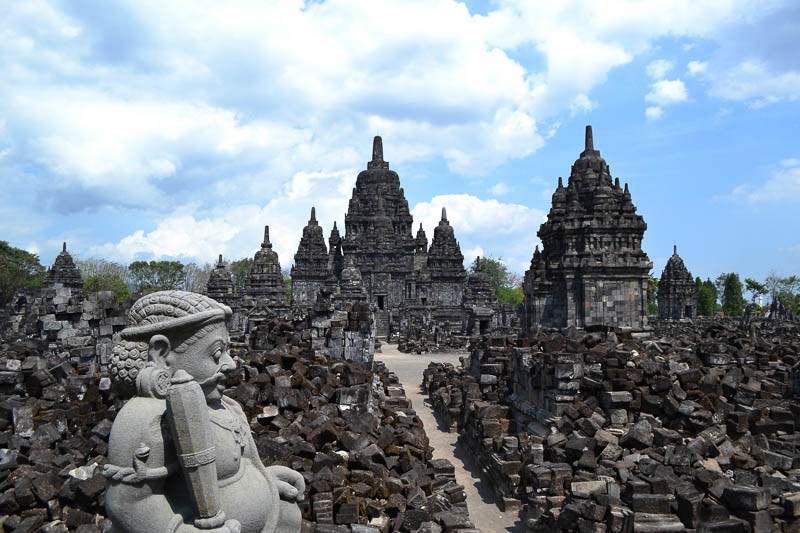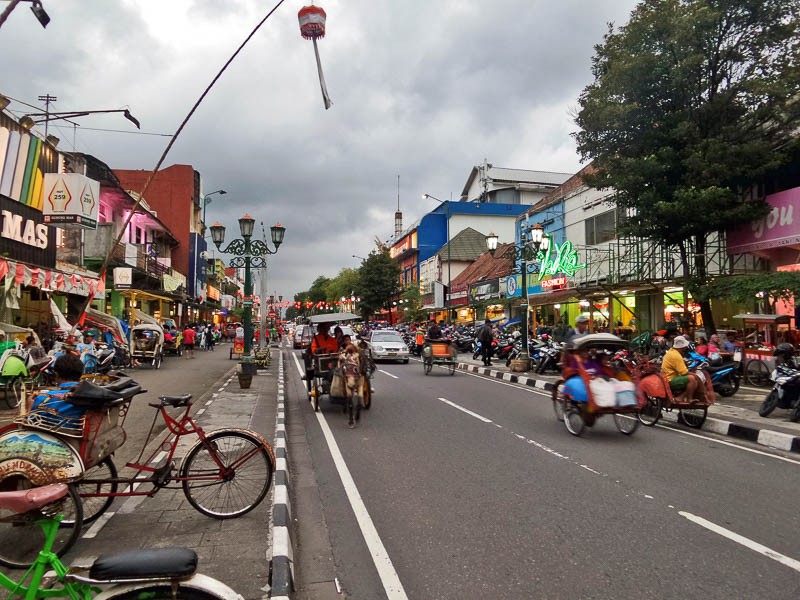Travel Diaries: Exploring Borobudur & the Cultural Wonders of Central Java
The majestic Borobudur temple complex is arguably one of the biggest tourist draws in central Java. But there are also many other reasons to visit this region.
Borobudur. Rising Up to Ancient History
 Borobudur / CC by 3.0 / Thrillseekr
Borobudur / CC by 3.0 / Thrillseekr
Before Sunrise
Waking up at 3am in the middle of the night is never easy – especially so for a self-professed night owl. Still, on a recent sojourn to Yogyakarta, I found myself crawling out of bed at this unearthly hour, not due to insomnia, but to catch a bus to Borobudur to view the sunrise at the magnificent 1,200-year-old temple compound.
This Unesco World Heritage Site, famed as the world’s largest Buddhist monument, is said to be at its most mystical and beautiful as the rising sun casts its multi-hued orange and pink glow on the temple complex. So, there I was, blearily taking a 90-minute bumpy bus ride into the heart of central Java in Indonesia, to get to Borobudur’s grounds before the sun rose at 530am.

 Borobudur stupas / CC by 3.0 /VasenkaPhotography / F Mira
Borobudur stupas / CC by 3.0 /VasenkaPhotography / F Mira
Dawn over an Ancient Monument
Thanks to our early start, our group made it handily to the site by about 5am, to jostle with the gathering crowds for prime photo-taking spots. Then, as the sun peeked out over the horizon, highlighting the silhouette of Indonesia’s most active volcano Mount Merapi, a hush descended over the chattering tourists. For a moment, all the little inconveniences of life melted away, as I basked in the reflected warmth of the sun on the grey stone of the temple and took in the serenity of the Buddha statues seated inside 72 perforated stupas, the symbols of this landmark.
It may be clichéd, but there’s nothing like watching the dawn of a new day over an ancient monument that has withstood the rise and fall of civilizations and natural disasters to bring at least a tiny modicum of perspective to life.
As I mentally checked Borobudur off my bucket list, I thought would spend the rest of my trip holed up at my resort retreat. Boy, was I mistaken.
Beyond Borobudur
Temples Galore
The next day saw me visiting the other Unesco World Heritage Site in this region, Prambanan, located north-east of Yogyakarta. Prambanan is a collection of Hindu temples, with a distinct series of slender, jagged towers, each one dedicated to a different god or deity. The magnificent Prambanan temples are the main attraction in this complex, but if time permits, walk, cycle or hop onto a toy train to explore the ruins of other temples within its grounds.
I was the only tourist at the site when I visited – there was something magical about soaking in the silence
 Candi prambanan / CC by 3.0 / Victor Ulijn
Candi prambanan / CC by 3.0 / Victor Ulijn
In particular, the Buddhist temple Candi Sewu, about 1km away from the main Prambanan temples, is worth visiting. Upon approaching Candi Sewu, which means 1,000 temples, take in the countless piles of stones stacked high around the main central temple.
This series of temples have been undergoing reconstruction for decades, but due to many missing foundation stones, only the main temple has been completed, although its interior remains empty.
The various piles of stones are the likely locations of where the other smaller temples used to stand. Wander among these heaps and you will notice abandoned attempts to fit the various stones together, like a giant jigsaw puzzle. Significantly less crowded compared to Prambanan as most tourists do not bother to explore the grounds – I was the only tourist at the site when I visited – there was something magical about soaking in the silence among these ancient ruins.
Culture Vulture
Now that I had hit my quota of archeological sites, it was time to bring a little bit of Java home with me. This region is known for its traditional handicrafts made using bamboo and local wood as well as Batik fabric.
 Jalan Malioboro / CC by 3.0 / BxHxTxCx
Jalan Malioboro / CC by 3.0 / BxHxTxCx
Jalan Malioboro in Yogyakarta is ground zero for souvenir shoppers, with a caveat: you have to be willing to bargain. Already in a zen mood from all that temple hopping, I had no desire to haggle with street vendors and made a beeline for Mirota Batik, a two-story fixed-price emporium housing all sorts of Indonesian wares at competitive prices. From kitschy keychains to carved wooden toys and bamboo tableware, there’s plenty to browse.
If you have an eye for the finer things in life, head to the antechamber at the back of the first floor for a well-curated selection of fine Batik fabrics.
Javanese Feast
 The Sawah
The Sawah
To end my trip, I made a reservation at the very charming The Sawah to experience a traditional ten-course Javanese Rijsttafel dinner.
This home-restaurant is run by partners Phillip and Wim, and specialises in home-style Indonesian specialties such as soto ayam (chicken soup), beef rendang curry, vegetable and tofu stew, all lovingly cooked by Wim’s family.
While feasting on all manner of local delicacies in the duo’s lush tropical garden terrace, I could not help but savour how time seemed to have stopped for me on the trip, storing these memories for when the hustle and bustle of daily life threatens to overwhelm.